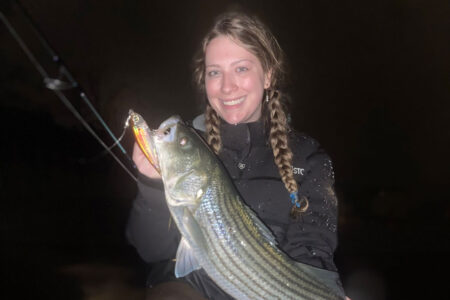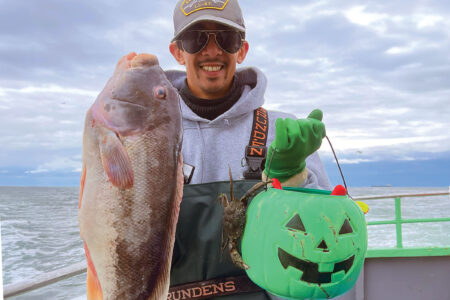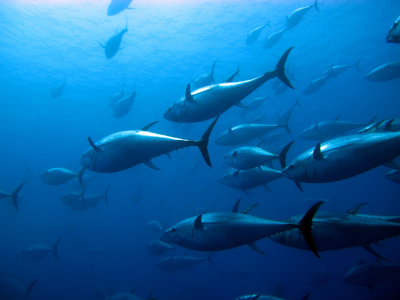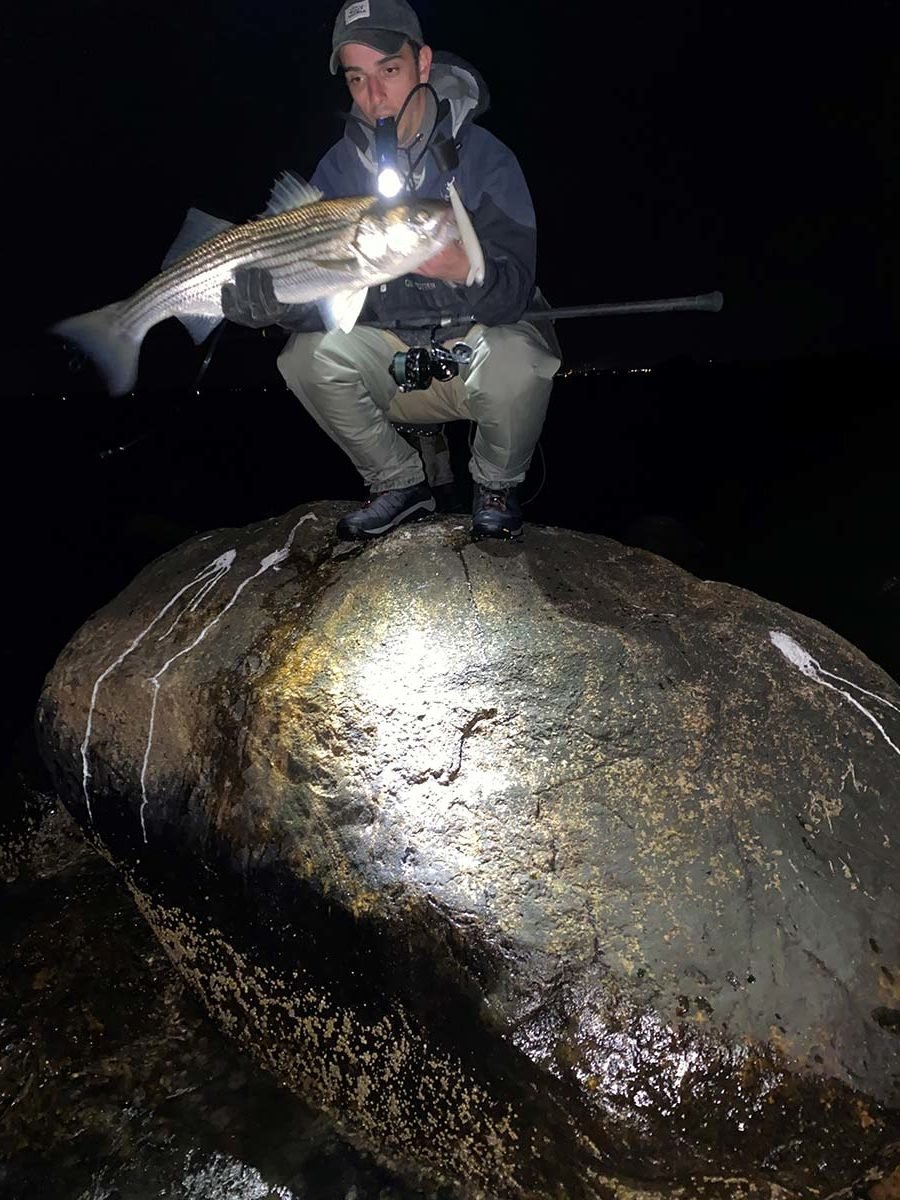
Landing big fish in the rocks isn’t easy unless you light the way.
If you’re a surfcaster, odds are you’ve fished around, in or on some rocks, or worse, on a jetty, fishing for stripers and hooked up to a good one. Not necessarily a cow or a trophy, but a good fish. Your first thought, or at least my first thought, used to always be, “how am I going to get this fish in without getting hung up on a rock?” I really can’t even estimate how many bass I’ve had to disentangle from a rock within 30 feet of where I was standing. But, as I said, that’s how I used to think. This situation was so common that it almost became expected that a certain percentage of my fish would be lost due to line breakage from scraping on rocks covered with barnacles; I figured it was just the cost of doing business.
Under The Light
In the mid-1980s, I started spending an unhealthy, if not an unreasonable amount of time under the Montauk Lighthouse fishing for bass. It was common in those years to be into fish from the first cast to the last through the entire incoming tide. And it was also common to lose an extraordinary number of lures to the rocks. Those were the days before braided line when most of us used 17-pound test Stren monofilament. Anything lighter couldn’t handle the fish efficiently, and anything heavier would cut down your cast to the point that you couldn’t reach the rip. That 17-pound mono represented the ‘happy medium’. When all went right, it was good. But when things went wrong, it was terrible. By wrong, I mean when the fish would go into or around some rocks and get into trouble.
Those were also the days of poor choices for waterproof lights. We ran the gamut from double D-cell battery camping flashlights to headlamps that would fail the first time they felt saltwater and everything in between. Then along came the Maglite, and it was bliss. We no longer had to hold a those massive camp lights in our mouths and risk breaking a front tooth, or try to get a headlamp aimed without blinding the closest caster every time you had to look around to get better footing. The Maglite was small enough to easily hold in your mouth without risk, and it was waterproof (if you kept the threads at both ends greased with silicone). Then there was the added benefit of being able to focus the beam for deeper water penetration. For a while, I enjoyed this feature for what it was, and that was a good thing. I now use a Pelican dive light fitted with a snorkel mouthpiece.
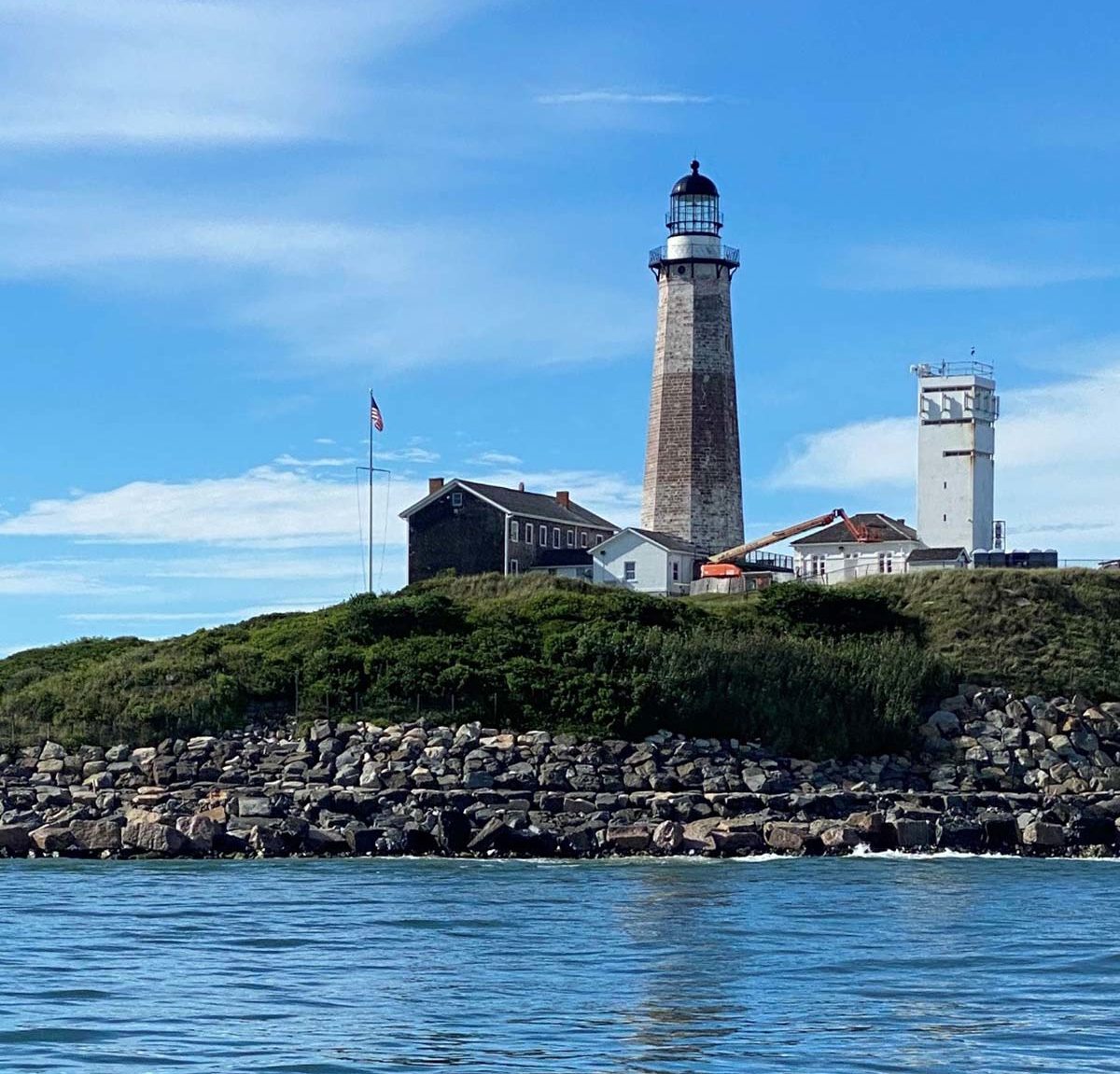
Initial Discovery
Then one night, serendipity came knocking. It was sort of by accident that while landing a fish that I wanted to actually see the size of, I put the focused beam in her eyes, and she abruptly turned and ran back out to sea, forcing me to fight her for longer than necessary and possibly overstressing her.
I didn’t overthink it when it happened; actually, I didn’t really consider that the light was any more of a reason for her to make a run than trying to get back out to deeper water. But the next fish did the same thing. An epiphany! “Am I really doing this?” When the next fish got close again this time, I aimed the beam out a bit farther, beyond the fish, just a foot or so, and she turned toward me. I aimed the beam at her tail, and the fish went forward. How it could sense the beam on its tail, I don’t know, but it did. This was astounding to me. I had landed hundreds of fish from this same rock over the years, and basically, none of them acted alike, and landing a fish could stretch from 40 feet to the left or 40 feet to the right, often causing crossed lines and cross anglers nearby. But from that point forward, every fish I hooked and landed under the light, I was able to steer between the same two rocks about eight feet to my right to an easy landing spot where I could reach the leader and drag it to a flat and safe rock for unhooking. I’ve used this technique for well over 30 years now and have proved to myself over and over again that it’s not just in my mind; it actually works!
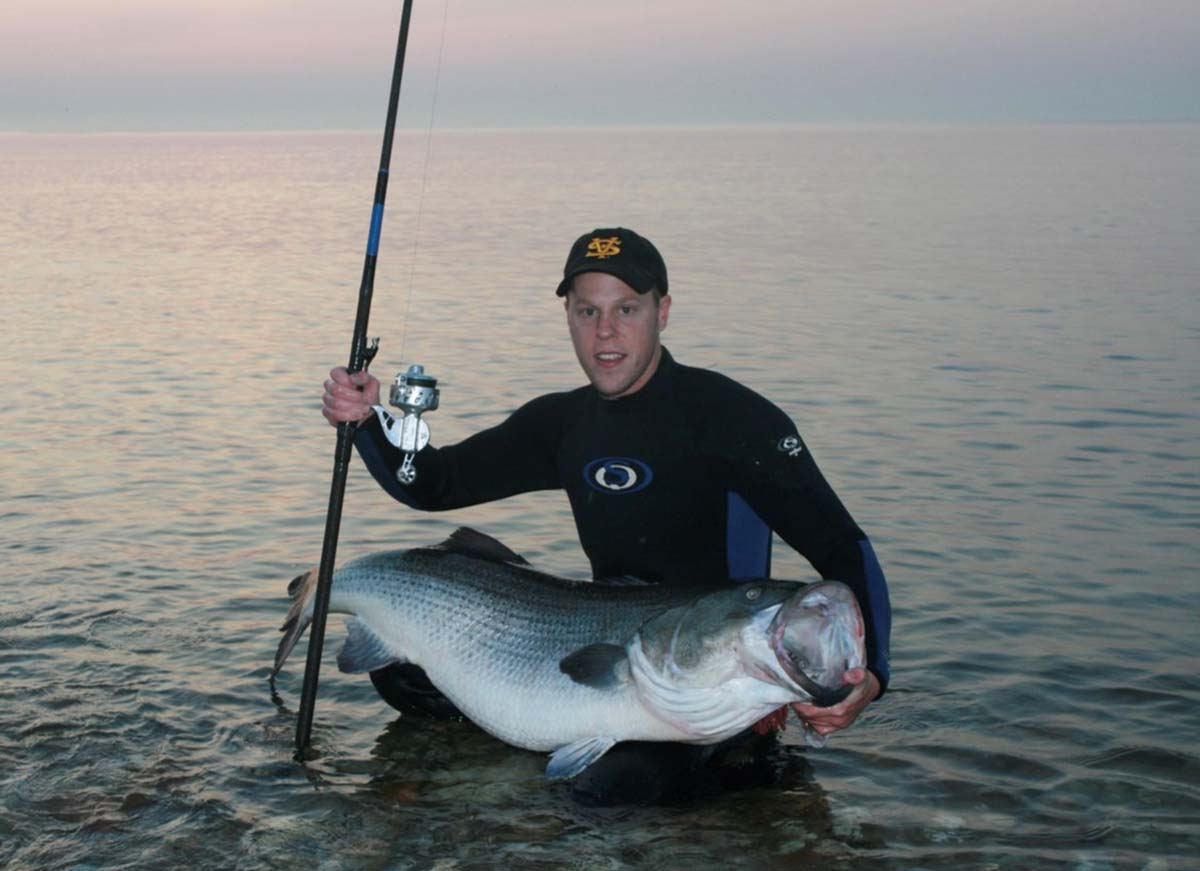
Corralling A Beast
The most memorable example came while field testing color patterns for a lure I was introducing to the market. My business partner at the time, Rob and I were fishing at a favorite (and very rocky) spot, and we were having a great night. Fish in the 30s on nearly every cast. We both hooked up at about the same time, and within about five minutes, I landed mine, but Rob said, “Hey Larry, this is a good one.” I said, “Yeah, that’s nice. Can I cast?” He responded, “I think so; I’m in pretty close.” So I cast and hooked up again, and five minutes later I landed my fish and asked Rob how things were going. He said he was still hooked up and still couldn’t gain any line. I asked and cast several more times, each one resulting in another 30-pound class fish.
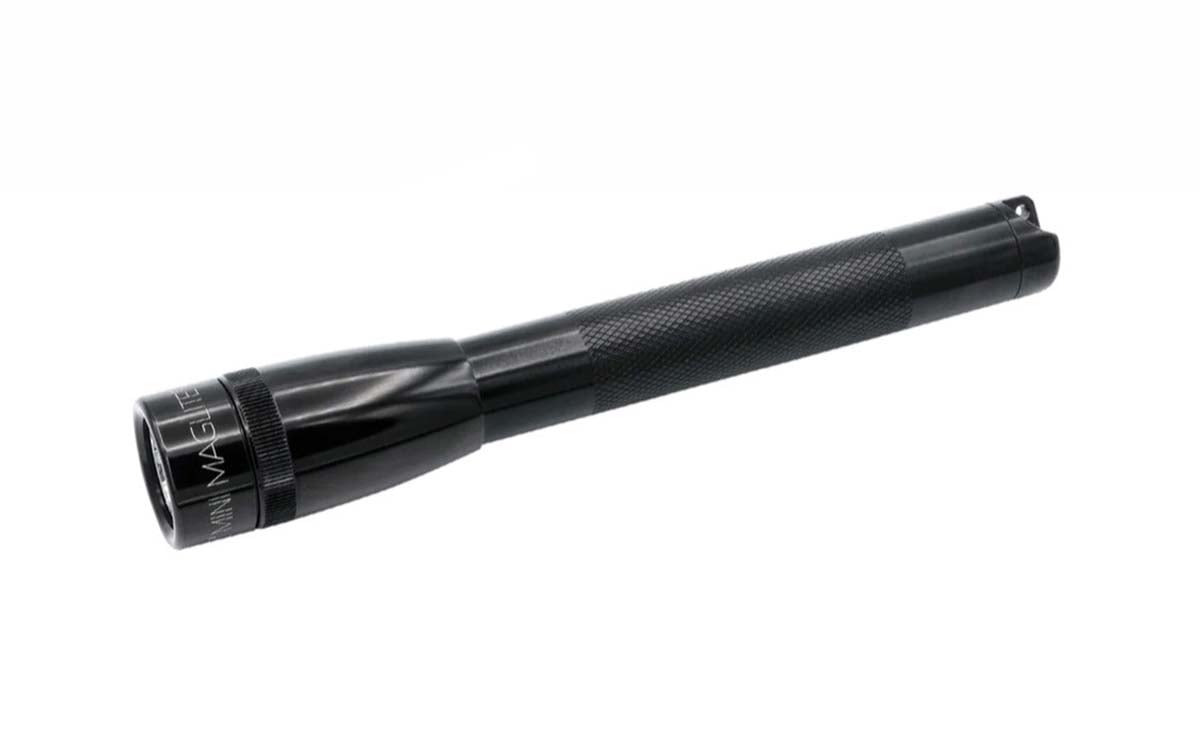
Finally Rob said, “I can’t move this fish, and haven’t gotten an inch of line in the last ten minutes.” That’s when I realized his fish was a monster, and I stopped fishing to see if I could help. I asked where the fish was, and he said, “Right in front of me, about 50 feet out.” I put my light beam on his rod tip and followed the line into the water, where I saw an incredible sight, the biggest striped bass I had ever seen, by far, stemming the rip sideways to the line. I turned to Rob and said, “Get ready; she’ll be in your lap in ten seconds.” I focused the beam and aimed it out past her by a foot, and she moved in toward us. I then moved the beam toward the tail, and that monster fish swam in a bit more. I continued corralling her with the beam and in less than a minute’s time she was nearly on the rock Rob was standing on. He grabbed the leader, and landed the biggest bass of his lifetime at 63 pounds: a perfect ending to a great fight.
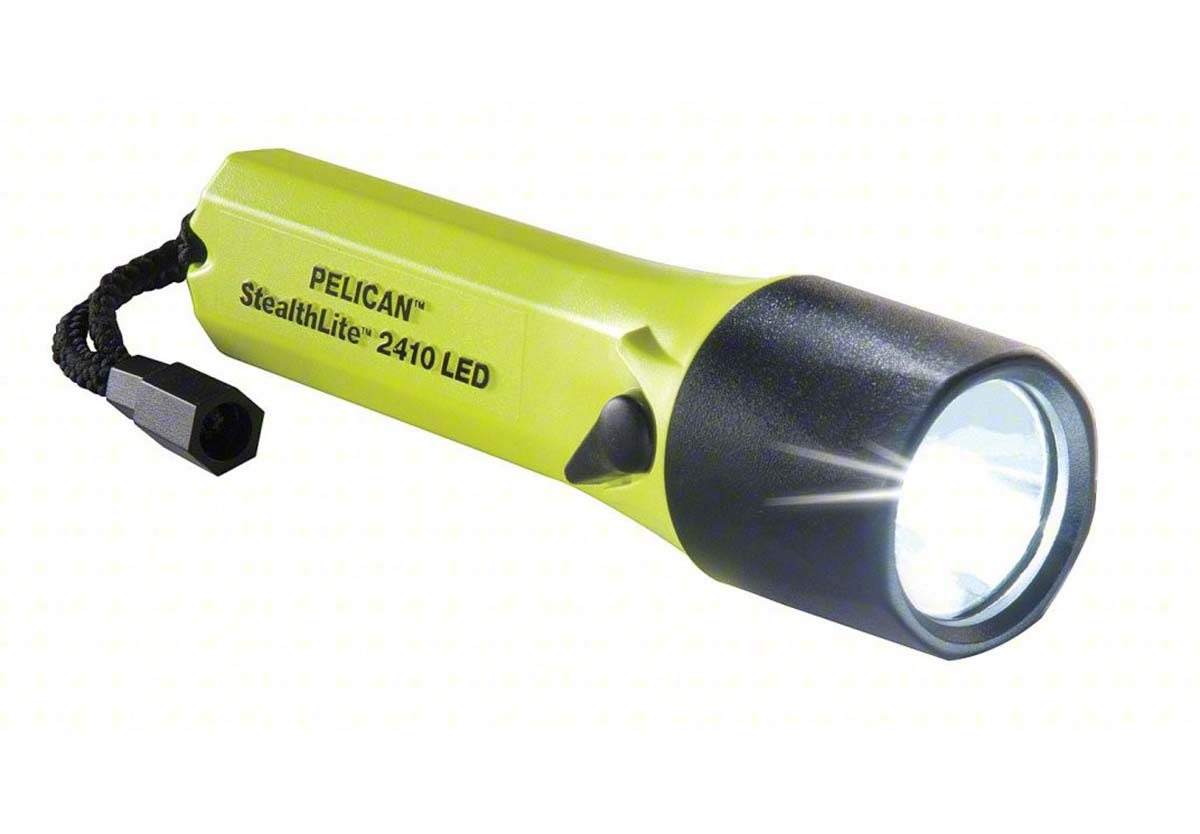
I don’t want you to think I do this from the time the fish is hooked up and just force the fish to backstroke in without a fight—I don’t. This method is for once the fight is over, and the fish is tired and desperately looking for a rock to pry the hook out of its mouth. I can’t count how many dollars I’ve saved over the years by keeping my fish out of trouble in the shallow boulders with my light.
So please, try it—it works. Use a light with a focusable beam that you can clamp in your mouth for easy aiming and which also keeps both hands free for fighting the fish. This works so well that, on multiple occasions, I’ve actually been able to steer fish that weren’t even hooked to swim between my legs where I could reach in and touch them.
I’ll never go back to the way I used to do it: I’ve seen the light!
